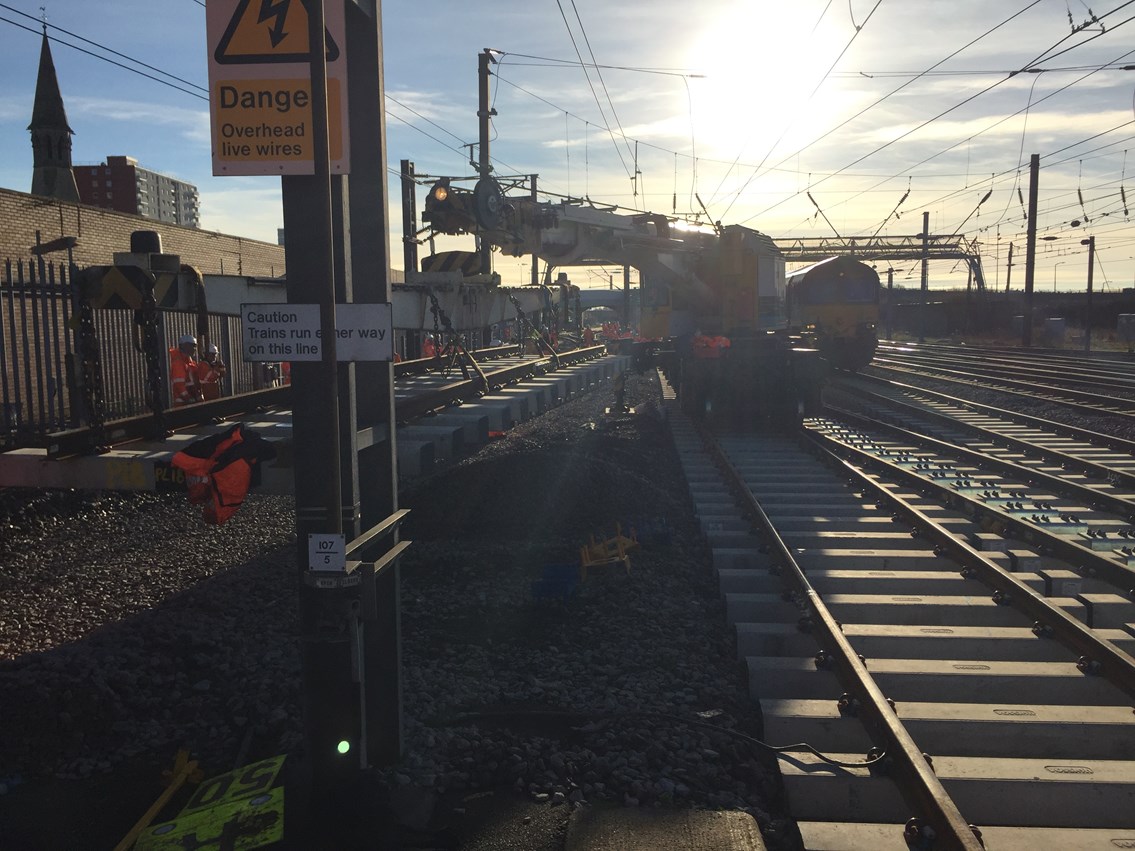Monday 11 Jan 2016
New advanced railway engineering techniques saved time and money at Christmas
- Region & Route:
- National
A new approach to railway engineering this Christmas has helped reduce delays for passengers and saved taxpayer-funded Network Rail hundreds of thousands of pounds by allowing trains to run at high speed after Network Rail’s recent £150m Christmas engineering programme.
Typically, speed restrictions are put in place after major track upgrades (such as those at Purley and Acton Wells Junction) for safety reasons – perhaps to allow freshly lain ballast to settle. These speed restrictions can cause disruption to passenger journeys and cause Network Rail to incur what can be significant costs as a result of the disruption to train operators’ normal service.
But, for the first time on this scale, over Christmas and New Year 2015 some projects allowed trains to start using the railway at high speeds – in some cases as fast as 125mph – as soon as they had finished thanks to new advanced railway engineering techniques and a focus on ‘high speed handbacks’.
Track monitoring and installation practices have improved significantly in the last few years. The key to achieving a high speed handback is to ensure track is installed at each stage to its specific design tolerances, that care is taken while tamping to get the track to its final exact co-ordinates and that welding and stressing is completed as part of the core works where sufficient access is available, rather than scheduled for a later date. A full media briefing is available detailing each project and the new techniques used is available for download.
This improved approach delivers significant benefits for passengers, the workforce, Network Rail, train operators and the millions of taxpayers who help fund the railway:
- Faster trains means reduced delays and journey times for passengers
- Staff spend less time trackside as they don’t need to set up and remove speed boards for train drivers
- Reduced need for compensation to train operators as disruption is reduced
Interview opportunity:
Network Rail’s programme director for track, Steve Featherstone is available for interview about the new techniques and high speed handbacks. Please contact Dan Donovan in the press office to arrange.
Pictures:
A selection of pictures of the projects involved are available in the Network Rail media centre
Media briefing:
Full details of cost and time savings achieved, the techniques used, and the projects involed are available in a detailed media briefing on the Network Rail media centre
Contact information
Passengers / community members
Network Rail national helpline
03457 11 41 41
Latest travel advice
Please visit National Rail Enquiries
Journalists
Network Rail press office -Dan Donovan
Media Relations Manager
020 3356 8700
Dan.Donovan@networkrail.co.uk
About Network Rail
We own, operate and develop Britain's railway infrastructure; that's 20,000 miles of track, 30,000 bridges, tunnels and viaducts and the thousands of signals, level crossings and stations. We run 20 of the UK's largest stations while all the others, over 2,500, are run by the country's train operating companies.
Usually, there are almost five million journeys made in the UK and over 600 freight trains run on the network. People depend on Britain's railway for their daily commute, to visit friends and loved ones and to get them home safe every day. Our role is to deliver a safe and reliable railway, so we carefully manage and deliver thousands of projects every year that form part of the multi-billion pound Railway Upgrade Plan, to grow and expand the nation's railway network to respond to the tremendous growth and demand the railway has experienced - a doubling of passenger journeys over the past 20 years.
Follow us on Twitter: @networkrail
Visit our online newsroom: www.networkrailmediacentre.co.uk

